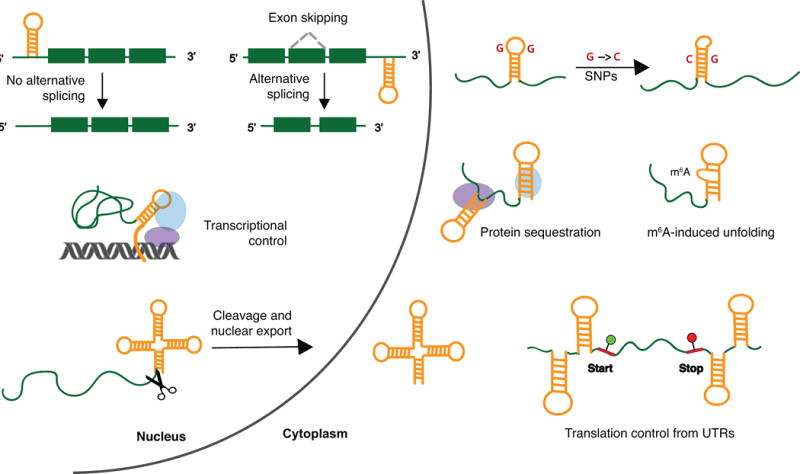Figure 1.

Example cellular processes and interactions regulated by RNA structures in non-coding regions. Left: In the nucleus, structured regions in pre-mRNAs can regulate alternative splicing. Structured non-coding RNAs can recruit transcription factors to genomic loci, interacting with both proteins and DNA. Formation of tRNA-like structures can promote cleavage from a longer transcript and export of the RNA fragment into the cytoplasm. Right: In both the nucleus and the cytoplasm, sequence-based changes such as single nucleotide polymorphisms (SNPs) or modifications such as m6A can alter RNA structure, which can in turn affect RNA function or protein binding. Non-coding RNAs can sequester proteins in specific cytoplasmic regions. RNA structures in UTRs can limit translation rates by impeding the initiation step. Despite the simple hairpin structures shown for clarity, cellular RNAs are known to adopt various complex structures. Adapted from Bevilacqua et al. 2016.45 Abbreviations: SNP, single nucleotide polymorphism; m6A, 6-methyladenosine; UTR, untranslated region.
